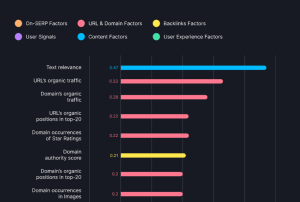Are you looking to improve your WordPress SEO and generate more leads through your blog? Then understanding and leveraging long-tail keywords WordPress is your ticket to achieving this. Long-tail keywords are three or more word phrases that are specific to your product or service. They are crucial for SEO as they have less competition and a higher conversion rate.
They can boost conversion rates by attracting targeted traffic. However, mastering long-tail keywords is not just about understanding them and their benefits. It also involves researching these keywords, optimizing your content with them, and analyzing their performance.
Maybe you’re already familiar with the concept of creating content for your blog rapidly and at a lower cost for quicker SERP ranking seo wordpress. Well, using long-tail keywords is a great way to further optimize this process. Stick around to learn how to master long-tail keywords for WordPress SEO.
Summary
In the ever-competitive digital space, understanding the importance of long-tail keywords for WordPress SEO is crucial. These phrases, composed of three words or more, are specific to your product or service, and provide a high conversion rate due to lower competition. Utilizing long-tail keywords in your WordPress SEO strategy can lead to valuable insights into user search behaviors, significantly boosting your site’s traffic.
Furthermore, the strategic placement of these keywords within your content, meta descriptions, and URLs can greatly enhance your site’s SEO and attract more organic traffic. Regular content updates based on keyword performance are also important.
Finally, regularly tracking and analyzing the performance of your long-tail keywords is essential in optimizing your WordPress SEO. This process allows you to understand how your chosen keywords generate traffic and convert visitors into leads. Tools such as Google Analytics can help adjust your content strategy based on user behavior. In summary, mastering long-tail keywords WordPress effectively can significantly improve your SEO performance and overall business goals.
Understanding Long-Tail Keywords
Long-tail keywords are key phrases typically composed of three or more words that are highly specific to your product or service. They hold significant value in the realm of Search Engine Optimization (SEO) because they are often associated with lower competition levels and higher conversion rates. When used effectively, they can play a pivotal role in driving targeted traffic to your WordPress site.
Why Are Long-Tail Keywords Important?
Firstly, long-tail keywords are crucial for successful SEO because they’re less competitive than shorter, more generic keywords. For instance, ranking for a keyword like “shoes” might be incredibly difficult due to high competition. However, a long-tail keyword such as “women’s red leather boots size 8” is likely to have less competition, making it easier for your WordPress site to rank high in search engine results.
How Long-Tail Keywords Improve Conversion Rates
Another key benefit of long-tail keywords is that they can drastically improve conversion rates. This is because they’re highly specific, which means they can attract more targeted traffic. Returning to our previous example, someone searching for “women’s red leather boots size 8” on Google is likely to be ready to make a purchase, compared to someone searching for a more general term like “shoes”. Hence, by optimizing your WordPress site for long-tail keywords, you can attract customers who are further along in the buying cycle, leading to improved conversion rates.
Understanding long-tail keywords and their benefits is the first step towards mastering long-tail keywords for WordPress SEO. The next steps involve researching appropriate keywords, optimizing your content with them, and monitoring and analyzing their performance.
Researching Long-Tail Keywords for WordPress
Researching long-tail keywords for WordPress is an essential step in your SEO strategy. This in-depth analysis can provide valuable insights into the search behaviors of users, potentially driving a significant increase in site traffic.
Finding Long-Tail Keywords on WordPress
There are several tools available for identifying long-tail keywords. Google’s Keyword Planner is a popular choice, but there are other tools designed specifically for WordPress users, such as Rank Math and Yoast SEO. These tools can provide valuable insights into the keywords your target audience is using when searching for content related to your niche. For example, a blog about vegan diets might find that “vegan recipes for beginners” or “quick vegan meals” are commonly searched long-tail keywords. Incorporating these keywords into your website content can help draw more visitors to your site.
Understanding User Intent
Understanding user intent is crucial when researching long-tail keywords for WordPress. This involves understanding why a user might be searching for a particular keyword. Broadly speaking, user intent can be categorized into three types: informational (seeking information), navigational (seeking a specific website), and transactional (seeking to make a purchase or use a service). By understanding the user’s intent, you can better tailor your content to meet their needs. For instance, if the majority of your users are using transactional keywords, you might consider adding more product reviews or shopping guides to your site.
By thoroughly researching long-tail keywords and understanding user intent, you can significantly enhance your WordPress site’s SEO performance. Remember, the aim is not just to rank higher on search engine results pages, but also to provide valuable and relevant content to your audience.
Optimizing Content with Long-Tail Keywords
In the realm of WordPress SEO, long-tail keywords play a crucial role in optimizing your content effectively. This section will discuss how to use these keywords to enhance your content and drive more organic traffic to your website.
Strategic Placement of Long-Tail Keywords
When optimizing your content, it’s essential to place your long-tail keywords strategically. They should appear in your article’s title, headings, subheadings, and throughout the body text. For example, if your long-tail keyword is “best SEO practices for WordPress”, you could use it in a subheading like “Implementing the Best SEO Practices for WordPress”. Remember, keyword stuffing can lead to penalties from search engines, so ensure your keyword placement seems natural and improves readability.
Optimizing Meta Descriptions and URLs
Incorporating long-tail keywords into your meta descriptions and URLs is another essential aspect of content optimization. The meta description gives potential visitors a brief overview of the page’s content, and when it includes the long-tail keyword, it helps search engines better understand the page’s relevance. For instance, for a blog post about “long-tail keywords WordPress”, the URL could be “www.yoursite.com/long-tail-keywords-wordpress”, and the meta description could include the same keyword. Remember, a well-crafted meta description with the right long-tail keyword can drastically enhance your click-through rates from search results.
Optimizing your content with long-tail keywords is not a one-time process, but a consistent effort that requires regular updates based on keyword performance. Embed these strategies into your SEO routine for sustained results.
Monitoring and Analyzing the Performance of Long-Tail Keywords
Monitoring and analyzing the performance of long-tail keywords is a critical task in optimizing your WordPress SEO. This process involves understanding how your chosen keywords are performing in terms of driving traffic to your website and ultimately, converting these visitors into leads or customers.
How to Monitor Long-Tail Keywords Performance
Monitoring the performance of your long-tail keywords involves tracking their rankings on search engine results pages (SERPs). You can use SEO tools like SEMrush, Ahrefs, or Google Search Console for this purpose. These tools provide insights into the average position of your keywords, their search volume, and clicks. For instance, if you notice that a specific long-tail keyword is consistently ranking high but not driving enough traffic, it might be an indication that the keyword is not relevant to your audience and you might need to reconsider your keyword strategy.
Analyzing the Performance of Long-Tail Keywords
Analyzing the performance of your long-tail keywords goes beyond just monitoring their rankings. It involves examining how these keywords contribute to your overall business objectives. Google Analytics is a useful tool for this purpose as it helps you understand the behavior of your audience: how they interact with your content, the amount of time they spend on your website, and their conversion rate. By analyzing these metrics, you can identify which long-tail keywords WordPress are bringing valuable traffic and adjust your content strategy accordingly.
For example, if a certain long-tail keyword is bringing a lot of traffic but the bounce rate is high, it might indicate that while the keyword is relevant, the content may not be meeting the user’s expectations. Therefore, you may need to improve the content associated with that keyword.
Conclusion
Long-tail keywords WordPress are undeniably crucial in your SEO strategy. Their specificity attracts targeted traffic and enhances conversion rates, giving your site an edge in a competitive digital landscape. Using tools like Google Keyword Planner, Rank Math, and Yoast SEO, you can find these valuable phrases, understanding user intent to craft content that truly resonates.
Strategically placing long-tail keywords in your content, meta descriptions, and URLs can boost your WordPress site’s SEO performance. Regularly updating your content based on keyword performance is also a key success factor.
Don’t underestimate the power of performance analysis! Utilize SEO tools and Google Analytics to understand how your chosen keywords drive traffic and conversions. By doing so, you can continuously refine your content strategy, helping you achieve your broader business goals. Embrace the power of long-tail keywords to maximize your WordPress SEO success!

